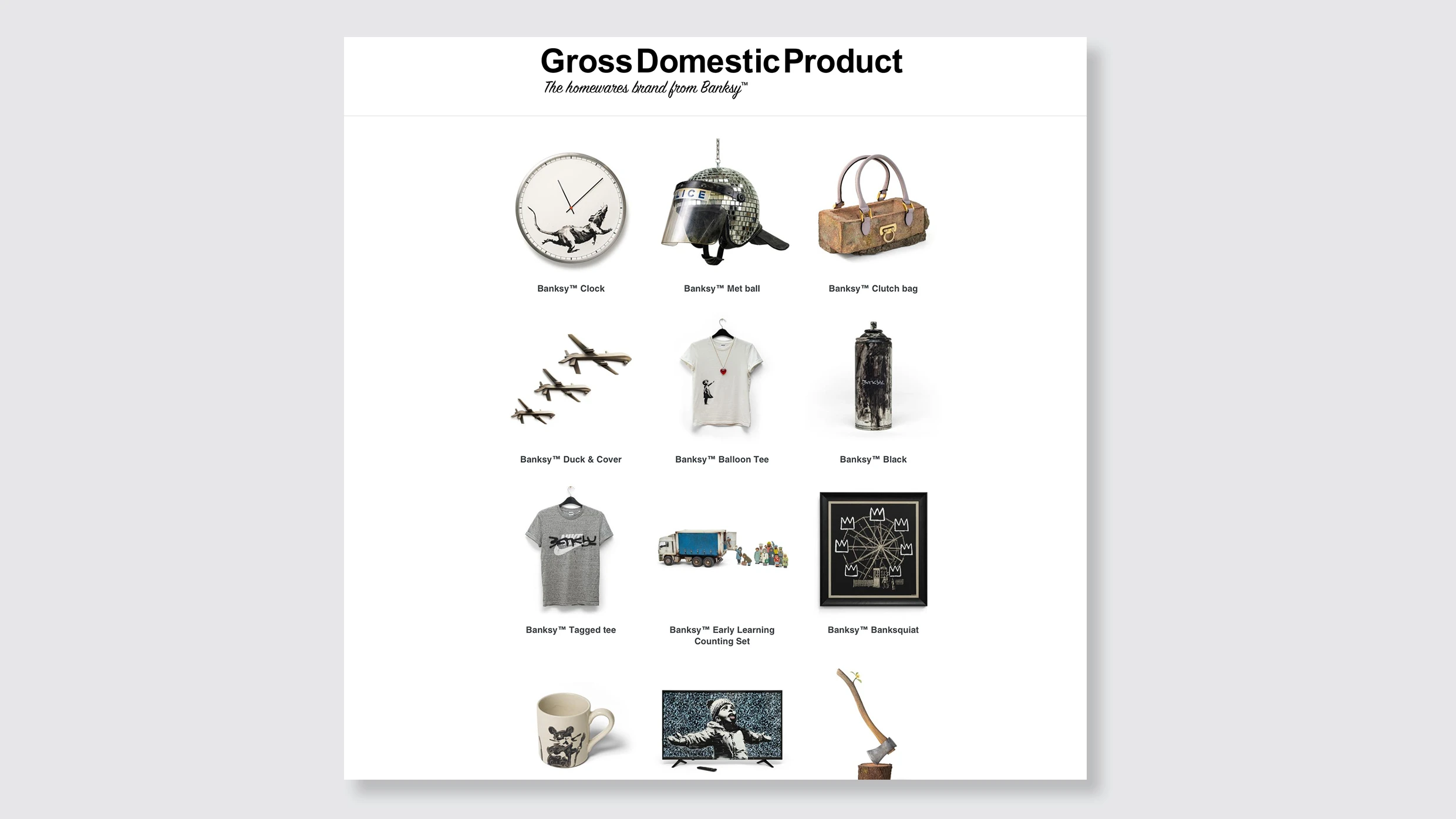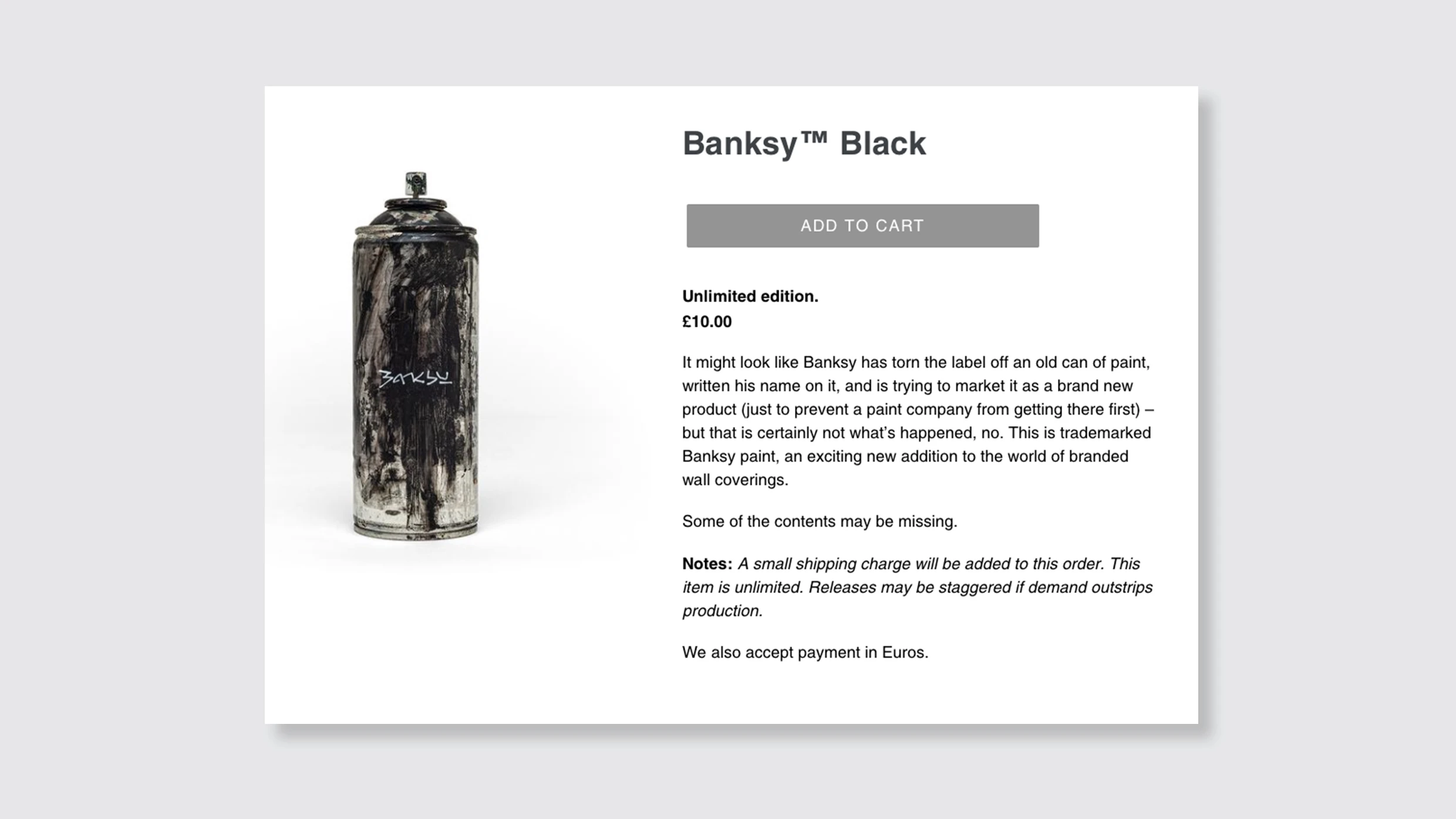Earlier this year, after his oil painting Devolved Parliament sold for over $12 million at a Sotheby’s auction in London, acclaimed street artist Banksy commented: “Record price for a Banksy painting set at auction tonight. Shame I didn’t still own it.”
It’s a joke that anyone would make under the circumstances of seeing another entity profit so dearly off of their labor. Perhaps Banksy, the anti-establishment artist who once sold screen prints for dollars outside Central Park for $60, was recognizing all over again how much his art was really worth. All of this makes it slightly less shocking that Banksy is launching his first store: Gross Domestic Product.

On one hand, Banksy is selling exactly the sort of high-art sculptures and prints you’d expect. The “Banksy Clutch bag” is literally a brick with some mortar, with pink leather handles and a gold buckle slapped on it. “Probably no less practical than the output of most haute couture fashion houses,” the product description jabs. One is available now for £750 (or about $967). Other items feel almost like a demented take on Target home accessories. The “Met ball” is a disco ball that’s wearing an old police riot helmet. Fifteen are available for £500 (or about $645). “Duck & Cover” is your classic, three-duck wooden relief (but here, the ducks are actually drones). 15 of those are available for the same price.
Finally, the GDP store features another category of product: The seemingly unironic cash grab. Mugs, T-shirts, and used spray-paint cans (that poke fun at Vantablack) start at £10 (about $13), available in unlimited quantities.

There is, of course, a twist. The rules of the site clearly state that things won’t be sold on a first-come, first-served basis. Rather, you can put in an order to buy these items from today until October 28. Assuming demand outpaces supply, purchases will be prioritized according to how the purchaser answers the question “Why does art matter?” “Please make your answer as amusing, informative or enlightening as possible,” the fine print reads.

The entire project may be a promotion for BBay, which the store describes as “the approved used Banksy dealership.” There’s little information available about the platform, but it’s possible such a network could, completely theoretically, certify and take a small cut of sales on Banksy’s aftermarket stock.
The store’s approach is reminiscent of Virgil Abloh‘s recent collaboration with Ikea on a collection of items that are essentially stamped as the artist’s own—half critique and half meditation on commercialism in art. A similar thread runs through Banksy’s store, featuring Nike and Adidas tees sprayed by the artist. But where Abloh’s selling out feels self-aware—and an Ikea rug that literally says “‘Keep Off'” quietly pokes fun at Ikea, consumerism, and perhaps even Abloh’s labeling motif itself—Banksy’s shop feels more like . . . a shop!
Of course, if GDP were merely a cash grab, many of these items could be listed for a lot more money than they are for the time being. Which makes GDP seem like not just a shop, but a statement. But also a shop.
Recognize your brand’s excellence by applying to this year’s Brands That Matter Awards before the early-rate deadline, May 3.
